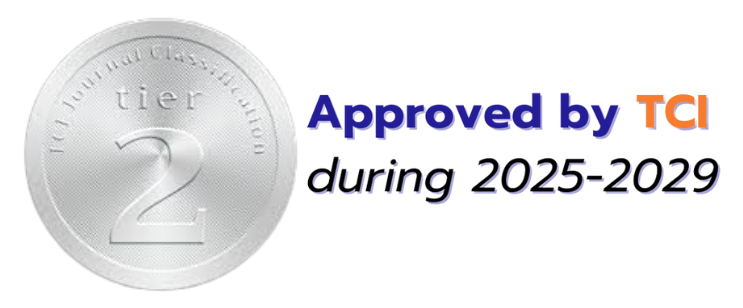ผลของการสอนตามแนวทฤษฎีบูรณาการเนื้อหาและภาษา (CLIL) ที่มีต่อความสามารถในการฟัง-พูด และความสนใจในการเรียนภาษาอังกฤษของนักเรียนชั้นมัธยมศึกษาปีที่ 2|Effects of the Instruction Based on Content and Language Intergrated Learning (CLIL) Approach to Mattayom 2
关键词:
English Teaching, Content and Language Integrated Learning Approach (CLIL), Listening and Speaking Performance, Interest of Learning English摘要
การวิจัยครั้งมีวัตถุประสงค์ คือ เปรียบเทียบความสามารถในการฟัง-พูด และความสนใจในการเรียนภาษาอังกฤษของนักเรียนที่ได้รับการสอนตามแนวทฤษฎีบูรณาการเนื้อหาและภาษา (CLIL) กับการสอนแบบเดิม กลุ่มตัวอย่างในครั้งนี้คือ นักเรียนชั้นมัธยมศึกษาปีที่ 2 จำนวน 2 ห้องเรียน ซึ่งได้มาจากการสุ่มแบบกลุ่ม (Cluster Random Sampling) แล้วดำเนินการทดลองโดยใช้กลุ่มละ 22 คาบเรียนในระยะเวลา 5 สัปดาห์ เครื่องมือที่ใช้วิจัย คือ แผนการจัดการเรียนรู้ แบบทดสอบวัดความสามารถในการฟัง-พูดและแบบสอบถามวัดความสนใจในการเรียนภาษาอังกฤษ และ สถิติที่ใช้ในการวิเคราะห์ข้อมูล คือ t-test for Independent Samples และ t-test for Dependent Samples ผลการวิจัยพบว่า 1) นักเรียนที่ได้รับการสอนตามแนวทฤษฎีบูรณาการเนื้อหาและภาษากับนักเรียนที่ได้รับการสอนแบบเดิม มีความสามารถในการฟัง-พูดแตกต่างกันอย่างมีนัยสำคัญที่ระดับ .05 และมีความสนใจในการเรียนภาษาอังกฤษแตกต่างกันอย่างมีนัยสำคัญที่ระดับ .05 2) นักเรียนที่ได้รับการสอนตามแนวทฤษฎีบูรณาการเนื้อหาและภาษามีความสามารถในการฟัง-พูดหลังการทดลองสูงกว่าก่อนการทดลองอย่างมีนัยสำคัญทางสถิติที่ระดับ .05และมีความสนใจในการเรียนภาษาอังกฤษหลังการทดลองสูงกว่าก่อนการทดลองอย่างมีนัยสำคัญทางสถิติที่ระดับ .053) นักเรียนที่ได้รับการสอนแบบเดิมมีความสามารถในการฟัง-พูด ก่อนและหลังการทดลองแตกต่างกันอย่างไม่มีนัยสำคัญแต่มีความสนใจในการเรียนวิชาภาษาอังกฤษ หลังการทดลองสูงกว่าก่อนทดลองอย่างมีนัยสำคัญทางสถิติที่ระดับ .05
The purpose of this research was to study the comparisons between the English listening and speaking performance of MattayomSuksa two students and their interest of learning English through the instruction based on Content and Language Integrated Learning approach (CLIL) and thetraditional teaching method. The Cluster Random sampling techniquewas used in this research. Each group had twenty-two periods of learning with the same contents forthe research in 5 weeks. The research instruments used were lesson plans, English Listening-Speaking Interview Test and the Interest in learning EnglishQuestionnaires. The data were statistically analyzed by a t-test for independent samples and a t-test for dependent samples. The findings of this research were as follows: 1) There were a significant difference in theEnglish listeningand speaking performance and interest of learning English, between the experimental and control groups at 0.5 significancelevel. 2)There were a significant difference in the English-speaking performance and interest of learning English of the experimental group at a .05 significance level between the preandpostexperimental stages 3) There was no significant differencein English-speaking performance of the control group betweenpre-andpost-experimental stages. On the other hand, there was significant differences in interest in learning English in the control group at a .05 significance level between the pre and post experimental stages.







